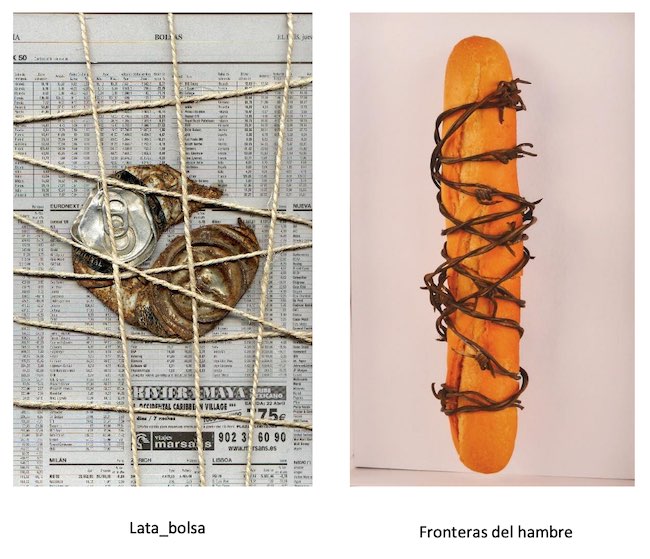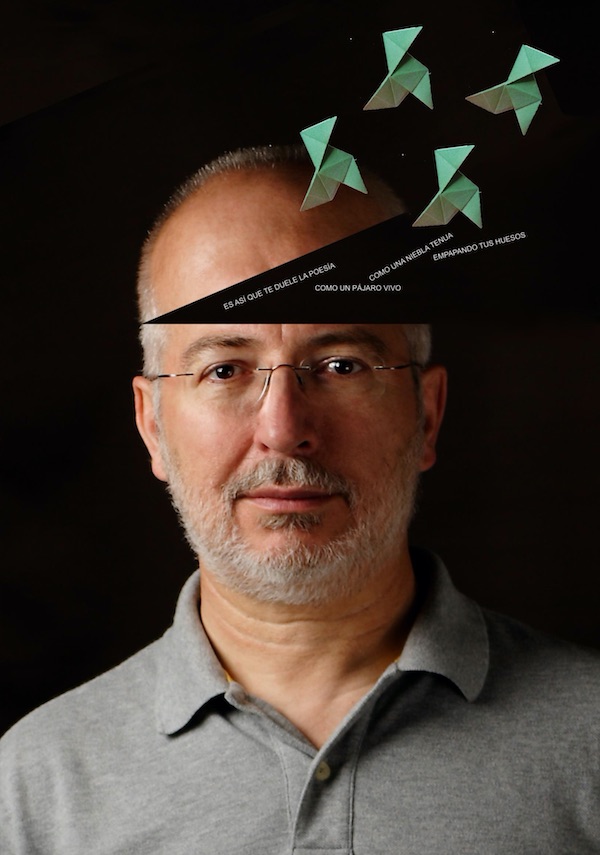the next Thursday 23 May 2024 opens in Open space (Valladolid) at 7.30 pm. “The walls say”Exhibited in it Julian Alonso It presents a selection of his works about his work as a visual poet. It can be seen until July 6.
Julian Alonso He is a difficult-to-define artist whose work falls within the boundaries of different arts and seeks sensation and immediate connection. In his works – through graphic representations, exploration of the boundaries of the word, and interventions with various materials and objects – he unleashes metaphors, symbols and subtle paradoxes to bring the viewer closer to current realities, current problems, make us think, and stimulate decisions and awareness.

We reproduce the author's text accompanying this exhibition:
Brief visual poetry
by Julian Alonso
I understand that term “Visual poetry” It is not overly fortunate and does not reflect the reality of what it contains. I prefer to speak up, both when I talk about my work in general and about the work of others “Border Art”often halfway to nowhere, but almost always opening up new routes to the terrain of creation.
From this standpoint, I do not dare to describe my work in one word. I don't know. I prefer to say that I devoted myself to sporadic activities ranging in the visual field from calligraphy and lettering to… college From conceptualism to minimalism, I move easily from lyric criticism to social criticism and flirt with the integrated design of books (colour, texture, paper, typography) and poetic subject matter.
It is a difficult task, to establish and define a style of work and inspiration for someone like me, not limited to a single starting point in the search for what has come to be called poetry.
Perhaps it would shed a little light on it or might contribute to obscure it more, if I said that poetry for me is everything and nothing, it is noise and silence, ugliness and beauty, the quiet reflection and the stone thrown into the pool. Creation wants its waves to reach the shore and we can feel them.
There I approach, to collect the first personal pronouns that resemble the shipwrecks that run aground, the penultimate verbs, the last adjectives that the fish did not devour, and with them, I try to compose that fruit so often the product of chance which we call a poem. Like all good food, it enters us first through the eyes, and is not always made up of words alone.
Sometimes they are simple drawings, gestures and shapes in the two-dimensional space of the paper. Others, faded letters floating in a cardboard sky. Sometimes the stone, the wood, or the wire mixes verbs, adjectives, pronouns, orphan letters, and suddenly, the light that shines, the poetry that appears and comes to the aid of the drowning poet, the passage that is not. Always flat, because he naturally appears as a three-dimensional creature calling you father and you end up believing him.
Here's the big question again: Where does inspiration come from? I look at the sky and see nothing but a cloud, under my eyes and the glint of a lost coin chasing me. I feel in my pockets and notice, hidden among the change, an idea that will open for me the doors of a fleeting paradise. And I believe. I give the world a new life in a birth that is not always easy, but very rewarding… and the poem shows.

:: About Julian Alonso
Julián Alonso (Valencia, 1955) holds a degree in Geography and History, rhetorical and visual poet, storyteller, columnist, promoter and curator of exhibitions, publications and cultural events, member of the International Association of Art Critics (AICA), full academician of the “Institución Tello Téllez de Meneses”. , responsible for several programs on Radio Nacional de España in Valencia in the 1980s, a columnist for “El Norte de Castilla” for fourteen years, and in 2001 he received the “Mariano del Mazo Journalism Award” and in 2019, the “Racimo Award” from Sarrada City Council, and others.
His work is distributed in magazines, books, websites, individual and group paintings and in various anthologies, and he has participated in numerous visual poetry exhibitions in Spain and different countries on all continents.
Among his publications it is worth noting: “Republic of Dreams” (1991), “Diario de April” (1992), “Arquitextura” (1993), “Memory Traps” (1999), “Pasos en la Arena” (2008), “ “Like Slow Poison” (2013), “Poetry in Destruction” (2014), “Collected Poems” (1993), “Gulbis di Viento” (2004), “All… or Almost All (visual poetry, experimental and postal art) In Spain” (2004), “Five Looks” (2009), “Blind Looks” (2015), “The Look That Writes” (2020), “Everyone Comes Back” (2020), “Five Visual Poets from Castile and Leon” (2020 ) and “No Posters” (2020) and the artist collaboration collection “Cero a la Izquierda”.

Open space
Contemporary art and culture
Callie Alonso Pesquera, 4, local. Valladolid




